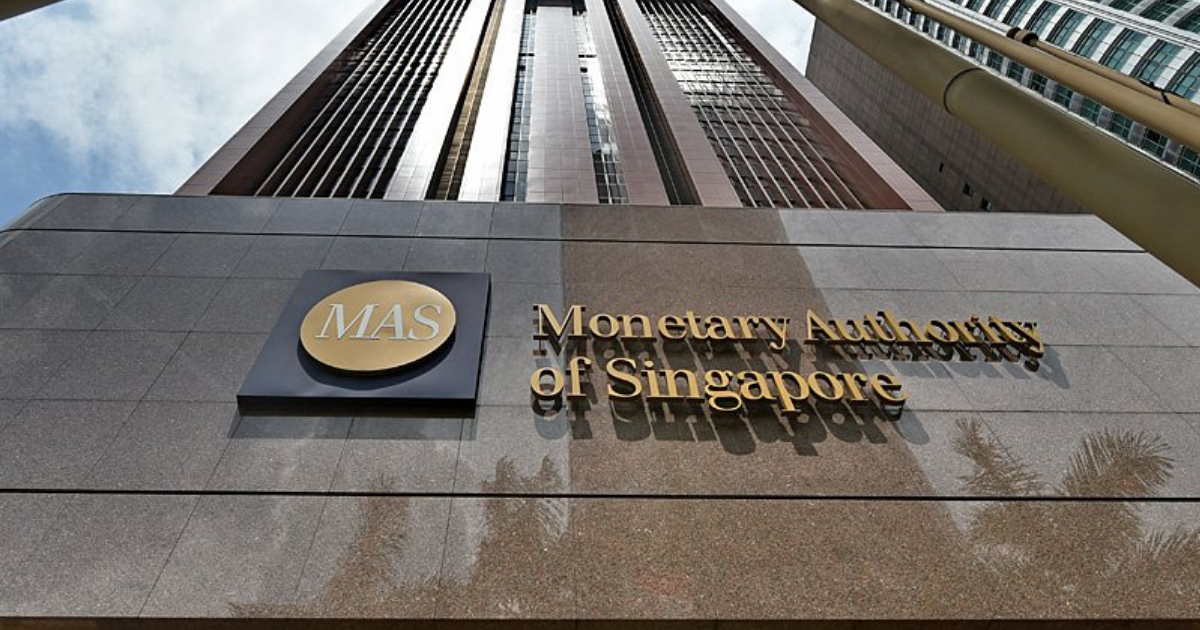Disclaimer: Opinions expressed below belong solely to the author.
Possessing a degree in economics myself, I’ve never hidden my deep disdain for academic economists, particularly those put in positions of influence and power. Unfortunately, it looks like they are about to push the global economy off the cliff again — though Singapore should be luckier than most.
Looking back at every economic crisis in history, we can clearly observe that out of thousands of professors, PhDs, advisors and analysts around the world, the number of those who actually predicted any of the then-impending disasters could often be counted on the fingers of your hand (just look at the meltdown of 2008).
Economics just happens to be a profession where the vast majority of practitioners are wrong most of the time and yet retain their jobs, getting paid big bucks for talking, writing, advising on economic policy, or worst of all, making decisions about it.
And then all of us have to pick up the tab for their mistakes.
Economics is a social science
The problem is that most professional economists are recruited from among those who are good with numbers, but economics is actually one of the social sciences. As such, it also requires understanding of humans — not merely statistics about them.
Many economists fall into a trap of believing the world can be understood from a table or a chart, without seeing the real-life factors driving the figures.
Alas, the world’s economic policies are still being steered almost entirely by recluses who don’t have the faintest idea of how people make their decisions or how even simple businesses are run — and it’s entrepreneurship that is the backbone of every economy.
You likely have heard about central banks around the planet raising interest rates in their fight against raging inflation. But if you’re not well-versed in economics, it might be quite opaque as to why that is such a universal behaviour (and similarly, why it is so terribly wrong in this situation).

To put it simply, interest rates are de facto the cost of access to money.
They determine how expensive it is for banks to borrow money when they need to, and consequently, make lending (like a business loan, car loan or a mortgage) more or less expensive — as the interest you pay is linked to the interest rates dictated by central banks and a bit on top added by your bank.
Conversely, it can also increase or decrease the interest rates paid on your deposit, making savings more or less attractive in the process.
Now, the reason central banks around the world want to combat inflation by raising interest rates is a simple economic theory.
When borrowing is more expensive, people and businesses reduce their spending, much of which is funded with loans (credit card, mortgages, investment loans et cetera). When consumer and business demand decreases, prices should follow, thus reducing inflation.
This logic follows the basic laws of supply and demand — when we don’t have enough money, our demand for products and services drops, forcing suppliers to reduce prices to make them more attractive.
So much for economic theory; now let’s talk about practice.
What drives inflation?
In practice, these policies only make sense when excessive borrowing is what propels inflation higher.
Let’s be perfectly clear — it does happen sometimes.
With easy and cheap access to funding, businesses and individuals begin to live above their means, wasting money without corresponding productivity gains, which is what drive prices up (high demand = high prices).
This is how asset bubbles are born — most recently, the housing bubble in the United States that burst in 2008 and shook the global economy.
In such a situation, it is essential for central banks to step in and restore reason to the marketplace, preferably sooner rather than later.
But it is obvious that it is not the case today.

Inflation in itself is dangerous — not because rising prices are necessarily bad, but because it can self-propel itself out of control. It’s not the economic, but psychological impact that is the biggest problem.
High inflation may, paradoxically, incentivise consumption, as people expect prices to rise — so it is better to buy something today than next month, when it may be more expensive.
As a result, the irrationally growing demand can further accelerate price increases (again, higher demand = higher prices), and throw the entire economy off the rails at one point.
However, today, it is overwhelmingly driven by the disruptions caused by the Covid pandemic and Russia’s war in Ukraine — not by too much easy money in the economy. The impact these events had on the global prices is manifold and compounding (making matters worse in the process):
- Higher energy prices (oil, gas, coal).
- Higher shipping costs (due to supply chain issues, heightened demand and higher energy costs).
- Higher food prices (due to disruption in trade of grains and fertiliser from Ukraine and Russia).
Excessively generous stimulus packages did play their part in some countries (like in the US) but the response should not be to crush everyone today. Imagine having to pay nearly double more for your mortgage after several rounds of interest rates hikes, as people in some countries have to.

GDP is only returning to pre-pandemic levels, while prices are much higher than they were in 2019. It’s not because people suddenly started splurging like crazy, but because costs of production and transportation are much higher due to extreme geopolitical circumstances.

And what do the central banks do? They make access to money more — not less — expensive, further penalising businesses and individual consumers, while pursuing an entirely artificial, arbitrary figure of low inflation, when the causes of rising prices are largely political, not economic.
Will they succeed? They very well may, but at the cost of steamrolling the global economy, destroying thousands of companies and millions of jobs.
While obsessing over a single figure, economists forget that their decisions impact millions of very real human lives. Sure, inflation will drop when they are unemployed or homeless, being unable to service their mortgages — but is this really the solution we’re looking for?
Central bankers sure seem to think so — everywhere except for one place.
Island of sanity
I can’t say for sure that economists at the Monetary Authority of Singapore (MAS) would not have behaved similarly to their counterparts if placed in their shoes, but fortunately, Singapore is a relatively small economy that is quite extremely dependent on international trade — and that has a profound impact on its central bank’s policy.
MAS manages inflation by controlling the value of Singapore dollar versus other currencies, instead of manipulating interest rates.
On the one hand, almost everything Singaporeans consume is imported and on the other, most jobs are dependent on foreign clientele and Singapore’s relative attractiveness versus other countries (whether it offers sufficiently good value for the money).

This is why it’s so important to maintain balance between SGD’s purchasing power (so that Singaporeans can buy as much as possible with their money) and its competitiveness against other currencies (ensuring that Singapore is not too expensive for investors and foreign customers, so that Singaporeans can find good jobs, and keep them).
Thanks to Singapore’s enormous foreign currency reserves, MAS can always intervene and shape the exchange rates in the way it sees most beneficial in the conditions of the moment.
It’s also why out of all regional currencies, SGD has proven itself to be the most resilient. In fact, Singapore Dollar is stronger versus virtually all other currencies except for the US Dollar, which is the global safe haven in crisis times (and thus, it’s hard to compete with it, when everybody wants it).
It is also why Singapore is far better suited to handle the incoming global slowdown that is bound to hit at some point, given the rising interest rates which are going to strangle economic activity eventually.
Because the island’s economy is neither crushed nor boosted by arbitrarily set interest rates, it is less prone to boom and bust cycles stemming from flawed monetary policy.
Cost of borrowing in local banks fluctuates in line with market conditions — not by the whims of a bunch of economists making misguided decisions pursuing an artificial statistic that is detached from current economic reality.
MAS’ strict adherence to the policy of keeping exchange rate stability also reinforces foreign trust in the city-state, with investors knowing that their money (and their relative value) are safe in Singapore.
MAS itself has enough in the reserve to maintain balance between purchasing power of the Singapore dollar, as well as costs of doing business in and with Singapore, ensuring full employment in the process — quite regardless of external economic conditions.
A small giant
I’ve read opinions that Singapore is among the most vulnerable economies ahead of another economic crisis (particularly one originating in America), but history — and the country’s wealth — suggests otherwise.

Historically, Singapore has not only suffered smaller dips during crises, but also bounced back better than not only its neighbours, but also other developed economies. It actually managed to weather the 2008/09 meltdown without dipping into recession (on an annual basis, at least, recording growth of 0.1 per cent in 2009).
Within the subsequent decade, Singapore’s GDP per capita increased by a whopping 50 per cent, from around US$40,000 to US$60,000, surging in value past stagnant European economies.

While the city-state, being the trade hub that it is, is extremely exposed to global conditions, it is also one of the most important (and strongest) links in the chain of the world’s economy, bridging East and West by sea and air.
It has no debt to speak of, trillions of dollars worth of reserves providing support for both its budgetary needs as well as its respected currency; is free of corruption and bureaucracy, offers friendly, low-tax environment that everybody in the world trusts and remains a trade and financial hub (even more so in the face of Hong Kong’s decline).
And its performance is not rattled by monetary policy conjured by academics driven by economic theory but measurable demands of economic reality.
Featured Image Credit: Free Malaysia Today
Also Read: Inflation is 56% higher for the richest Singaporeans, and that’s great news for the budget








